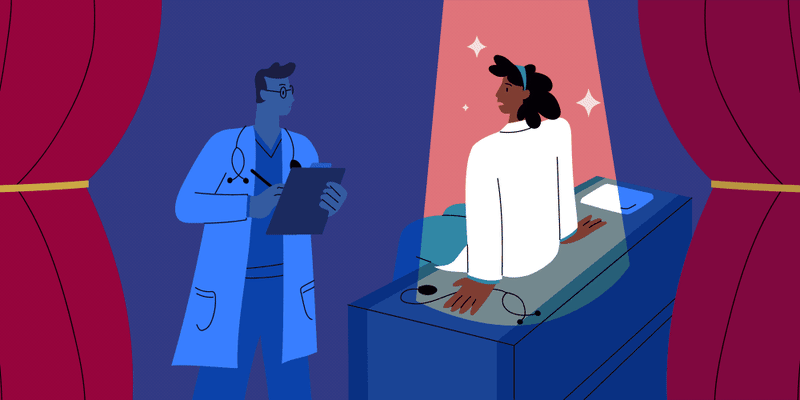“The one thing you really need to know is it isn’t made of cholesterol. They’ll ask that on boards.” Next slide.
The anatomy and pathology of the ear was certainly not “high yield” for an exam. Most students probably gave it a brief once over before turning to cardiac physiology or nephrotic syndromes. Like many in that frigid lecture room (the air conditioning never worked quite right), I began to slowly fade away from attending lecture in the latter half of my second year in favor of studying other materials. I decided to attend this day because I particularly enjoyed this lecturer. As the presenter prepared to start, I made one last sweep around the room, and noted only one close friend of mine present in a room with fewer than fifteen people in sight. The PowerPoint began.
Over a year later, the final patient arrived as we gathered on the last day of clinic. I was immediately intrigued by this young woman’s story. The patient lived in rural Alabama many minutes from the office. Buried among the usual health maintenance tasks we discussed was the sheer annoyance caused by her dripping ear. She had been waking up with a soiled right pillow for years. “It smells really bad too. Is that normal?” Despite several consultations with otolaryngology, she was still stumped. “They told me it’s TMJ, but they gave up after a while.” My attending glared at me. I didn’t suspect TMJ either. She had none of the classic symptoms I was taught in medical school. My preceptor, having known this patient since she was very young, gently palpated her mandible. The patient stared with an inquisitive face. “I highly doubt it’s TMJ and we probably should culture your ear,” said my attending. She had been treated with antibiotics several times by other clinicians with no luck. After thanking the patient and wishing her safe travels home, we stepped out of the room. In my head, I vividly recalled the one lecture that described the key symptom of foul fluid emanating from the ear and I knew it wasn’t made of cholesterol. It was actually a destructive overgrowth of squamous cells that could lead to permanent hearing loss. This was a going to be a long shot. Hearing the hoofbeats of an impending zebra, I summoned my medical student naivete and said to my attending, “I think she may have a cholesteatoma.” Further research revealed the initial test should be a temporal bone CT scan. My preceptor obliged.
As weeks passed uneventfully, I would check the chart every now and then. Nothing. Then, a nursing note that the patient failed to show for her CT. “Will call back,” it read. It was on my next rotation that I was greeted with new results displayed on my computer. “Diffuse opacification of the right middle ear and mastoid air cells suggestive of cholesteatoma.” I was stunned. Despite the obstacles, I, the medical student, had successfully diagnosed a patient with a condition with fewer than 10 in 100,000 cases per year.
It is clear that radical changes continue to occur in medical education. We have now inadvertently restricted ourselves to the idea of medical school as a remote “correspondence course.” Outside entities aggressively compete daily to sell a third-party medical education to the thousands of medical students across North America. Remote education has provided numerous benefits to students such as facilitating virtual meetings and reducing the cost of residency interview attendance. However, this change in the first two pre-clinical years has only exacerbated the issue of the “iPatient,” as Dr. Abraham Verghese eloquently puts it, in the third year of medical school. It is clear we must act to improve medical education in the pre-clinical years by shifting the focus away from superfluous PowerPoint slides to active in-person learning more representative of what students experience on clinical rotations. This is a challenging issue, but the solution lies not in mandating students to avail their presence. Rather, it involves immersing those studying the basic sciences in the clinical correlations they will use as a student clinician. Who better than our patients and their stories to teach medical students?
This process will take time. Considering the high demand already placed on many physicians, I recognize this is no easy request. Institutions must support physicians in their efforts to restore medical education from unengaged, rote memorization at home to its active, patient-centered past. For the time being, as our patient remains patiently waiting for surgical consultation at a tertiary center, my viewpoint on lecture has changed. I now enthusiastically recommend to the entering students at our institution that they attend. It’s a start.
What's the last zebra you encountered? Share in the comments.
Hunter Scott, B.S., is a third-year medical student at the Heersink School of Medicine at The University of Alabama at Birmingham. He graduated from The University of Alabama, in Tuscaloosa, with a major in psychology and minor in biology. Hunter is interested in medical education with plans to pursue a residency in internal medicine.
Illustration by April Brust







